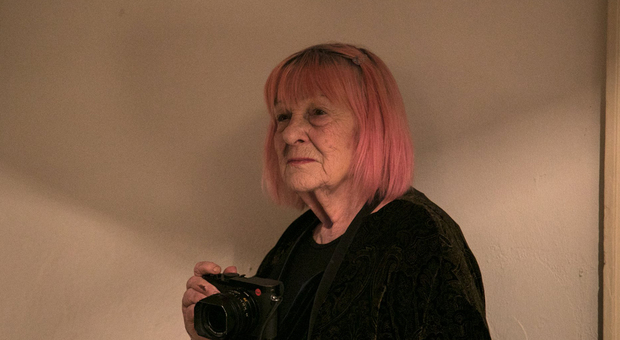Once in high school, the Literature teacher took us to an important lecture. When we sat down, a lady with short pink hair, smiling with a camera in her hand, arrived. Although elderly, she emanated a force that felt much stronger and alive than ours. During the conference, she asked us a favor. She smiled again, and we smiled and agreed back. Then she picked up her camera and started taking burst photos without looking into the lens. We were all surprised, but she said that aesthetics was not the most important thing for her, but rather witnessing the moment, this day with us young people. I remember she said: “If the sitters are compassionate, photographers must portray them so. You must always photograph sitters with boldness and respect, you owe them that.” That is the Letizia Battaglia I met, an incredible woman, or rather a pillar for the XXth century photography and photojournalism in Italy.

Letizia Battaglia, often known as the photoreporter of mafia, refuses to be called that. She wanted to photograph life through what she experienced, from a human, social, cultural and political point of view. Starting to photograph at the age of 34, Battaglia devoted herself mainly to Palermo in the seventies, in a Sicily that was in civil and social war due to mainly the mafia. Her shots are a political and human testimony of what made these times and city difficult to live.
Part of Battaglia’s work focused on documenting the psychiatric patients within the asylums of Palermo. Following the Basaglia law launched in 1978, these photographic reportages opened a world hidden from social denial. Thanks to the Basaglia law, promoted by the homonymous psychiatrist, asylums where patients were entirely excluded from social life and physically threatened were closed. Before this event, psychiatric patients were considered irrecoverable and dangerous, therefore locked up in asylums. By starting structural changes within the remaining asylums, the Basaglia law restored dignity to the psychiatric patient as a person. However, although Italy was the first country in the world to close asylums, it lost credibility along the way as many asylums, including some in Palermo, remained open as before.
Social reformism created the basis for the birth of a photographic art highly interested in the everyday life, staging the city world and its people as a theater which pushed the photographers to work wandering about the streets. Battaglia, who at the time worked at the newspaper “L’Ora”, used to run away from the editorial staff at every lunch break to spend it in the Casa dei Matti (Home of the mad people) in via Pindemonte. During those years, she used to connect with the patients through normal contacts, such as sport games and cinema and theatre staging.

“I entered the asylum by attraction. Just as I have an attraction for life. I have never been afraid of madness. In fact, I went to meet, we hugged each other. Inside the asylum I found a touching humanity. Madmen are rich people who have not been honored by this society. (LaSicilia, 2020)”
Because the cameras of the seventies lacked technical accuracy, it forced her to go close to the subject. Her shots present a greater vitality, naturalness, closeness to the sitter or the action. Furthermore, the body of the camera did not hide the photographer’s face when she looked through the lens. That is why the viewpoint of the shots shift to the edges of the scene instead of the center since Battaglia is involved in the scene, and exchanges glances with the sitters.

The MAXXI Museum of Contemporary Art in Rome dedicated the exhibition “Just for Passion (2017)” to her, which I visited a month after the conference. The installation of the main room struck me, because it displayed several large-format photos, suspended in the air and time. The shots were not thematically deployed: these were given to spectators like a photographic roll which had just been printed; several shots of different days, from the same period, would hit your eye with scenes of all kind. Mafia dead bodies, wives mourning, snap-portraits of actors who marked the history of the period, such as the activist lawyers Falcone and Borsellino, madmen from the Piedimonte asylum, free children in the streets of Palermo, the exaggerated bourgeois rallies, and so forth.
A period of time that lives through shots, which, despite being black and white, still speak today.

